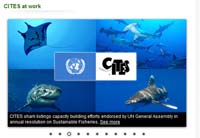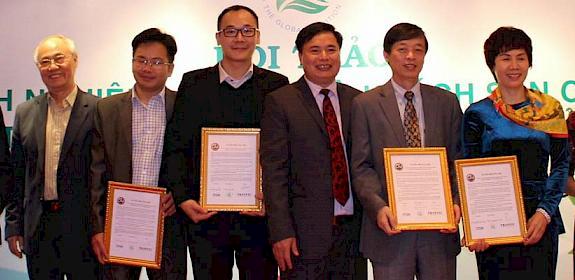CITES: 35 years on, more resources needed
Washington DC, USA, 24th December 2010—35 years after it came into force, the Convention on International Trade in Endangered Species of Wild Fauna and Flora (CITES) remains highly relevant, but funding remains a principle limitation to the Convention, in particular to strengthen enforcement and the quality of trade data finds a new study published today.

A team of scientists from the National University of Singapore and Oxford Brookes University published their deliberations today in the journal Science on how they believe the effectiveness of CITES could be boosted.
CITES is an international agreement between governments that aims to ensure international trade in specimens of wild animals and plants does not threaten their survival.
The paper’s authors note that while credible biological and trade data are core to informing decisions and garnering political will and consensus among CITES Parties “many CITES Parties fail to systematically monitor and report international wildlife trade.”
“The net result is that analysis of available data often remains insufficient to identify species threatened by trade and to detect trade inaccuracies and loopholes,” says Vincent Nijman of Oxford Brookes University, and an author of the Science study.
The collection of trade data only along easily accessed trade routes, such as at airports, is also problematic as it fails to convey the full scale of wildlife trade, say the authors.
To address these, and other issues, the paper calls for a much greater degree of co-ordination among CITES Parties, including initiatives already underway on enhanced data-sharing and analysis, such as the Wildlife Enforcement Monitoring System, and the planned illegal trade database.
The majority of such proposed solutions depend on enhanced active, sustained, and reciprocal engagement of CITES Parties with external partners, a process the authors recognize would by administratively demanding, costly, and politically challenging.
To meet these requirements, far greater resources are needed: as the report notes “The [CITES] Secretariat operates on meager party donations,” and it calls for “Parties, particularly importing nations, to increase contributions dramatically.”
“After 35 years, the CITES framework remains highly relevant,” says Nijman, “but only through increased resources can the Convention move toward proactive, real-time monitoring and regulation to strengthen wildlife trade enforcement and data quality.”
“These are vital improvements: a strengthened Convention is essential to protect imperiled biodiversity.”
The paper, Boosting CITES by Jacob Phelps, Edward L. Webb, David Bickford, Vincent Nijman and Navjot S. Sodhi is available through the Science website



